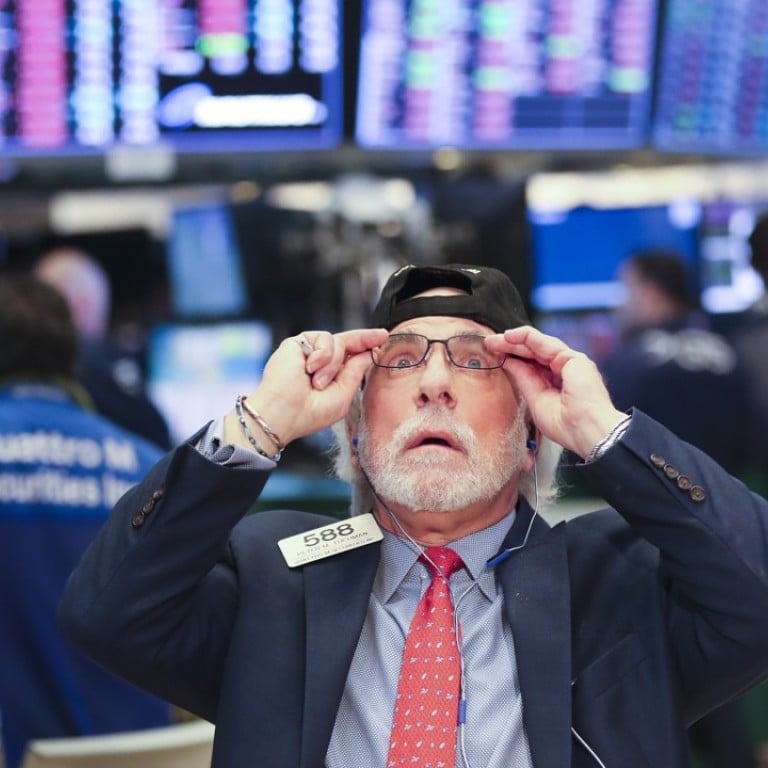
Keep bonds on the books but it is also time to explore equities
Credit Suisse forecasts 10-year Treasury yields will move no higher than 3 per cent over the next 12 months – from 2.9 per cent currently – suggesting only a limited move higher from current levels
Reports of the death of bonds – while commonplace – are greatly exaggerated, in my view. An apparently toxic confluence of rising Treasury yields, widening credit spreads, and fears that the asset class had entered the terminal stage of the credit cycle, sparked a spate of obituaries in the press. Inevitably, investors have started to ask whether it is time to unwind holdings in their most beloved of financial assets.
I exaggerate slightly, but the prospect of an Asian investor willingly selling their bonds is almost unimaginable. Investment grade and/or high yield credit has been the mainstay of client portfolios for years, even decades. They have been the US Postal Service of financial markets. They always deliver.
In the past 21 years, for example, Asian US dollar credit – across all ratings – has delivered negative returns just three times, in 1997 (Asia Crisis), 2008 (Lehman Crisis) and 2013 (Taper Tantrum). How’s that for reliability? Moreover, over the two decades, the asset class has returned an average 7.25 per cent per year, equivalent to a cumulative return of 335 per cent. Small wonder investors have developed attachment anxieties.
But with global growth increasingly synchronised, global monetary policy apparently tightening, and inflationary fears on the rise, is it time to consign bonds to the home for aged portfolios? And is it also time to look with fresh eyes at the youthful opportunities abounding in equity markets across the world?
Well, yes and no; or more precisely, no and yes.
In my view, it’s far too soon to pension off your bonds; and – as discussed in previous columns – it is absolutely the right time start exploring equities.
For those anticipating the early demise of credit, this may sound counter-intuitive. What about the relentless surge higher in US Treasury yields? As the US Fed raises interest rates – the market now expects between three and four 25 basis points hikes this year – does that not mean yields will move higher and negatively impact total returns in the credit space?
Actually, we don’t think so; we think 10-year yields will move no higher than 3 per cent over the next 12 months – from 2.9 per cent currently – suggesting only a limited move higher from current levels. Bond markets have an uncanny way of pricing in economic expectations – eventually. Economic data is currently warning of a pause in growth momentum in the US, which would limit the upside on yields and be supportive for bond prices.

So what about credit spreads, which reflect company risk? Consensus holds that the credit risk premium has compressed to such a tight level that it no longer adequately compensates investors for the risks they take. In a rising interest rate environment, with even cash offering an increasingly attractive return, surely credit risk premia would widen and this would in turn constitute a negative for returns?
Well it is undeniable that credit spreads are tight. But it is also important to note that spreads have been tighter in the past, particularly during the period 2003 to 2007. In other words, the sheer weight of buying from investors is likely to ensure credit remains well bid, preventing spreads from widening significantly. It’s also worth pointing out that in the superhot new issue market, higher coupons also make credit that much more attractive from a carry perspective.
Finally, the credit cycle. In the late stage, corporate leverage typically increases, cash piles diminish, overall credit quality deteriorates and default rates tick higher. All this is true, but it is credit negative only if we assume we are actually in the tail end of the cycle.

The credit rating agency Moody’s disagrees. In its much anticipated Annual Default Study published last week, the key high yield default rate is expected to dramatically improve from 2.9 per cent in 2017 to just 1.7 per cent in 2018. In other words, Moody’s believes a positive mix of growth, healthy earnings, and low refunding risk will positively support creditworthiness – and credit spreads – over the coming year.
Of course, Moody’s paints – correctly in my view – a macro environment also conducive to equities. I’ve suggested in previously commentaries that we are in a multi-year upswing in global equity markets in general and emerging markets in particular.
And it goes without saying that in such an environment, expected returns in bonds will typically underperform those of equities. Hence, client rotation from the former to the latter is entirely appropriate and to be expected. Nevertheless, I firmly believe credit will continue to remain a critical part of a balanced portfolio both as a way of generating modest total returns and as importantly, and as a means of hedging and diversifying risk.
John Woods is the Chief Investment Officer, Asia-Pacific, at Credit Suisse

